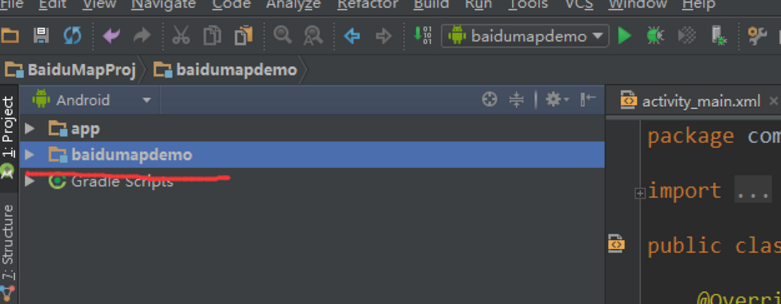編輯:關於Android編程
一、屏幕分辨率
Display display = getWindowManager().getDefaultDisplay(); Point size = new Point(); display.getSize(size); int width = size.x; int height = size.y;
或者:
DisplayMetrics metrics = new DisplayMetrics(); getWindowManager().getDefaultDisplay().getMetrics(metrics); int width = metrics.widthPixels; int height = metrics.heightPixels
上面的代碼是要在能獲取到Activity的情況下使用的,如果無法獲取到Activity,則可以使用一下的代碼:
WindowManager wm = (WindowManager)context.getSystemService(Context.WINDOW_SERVICE); Display display = wm.getDefaultDisplay(); Point point = new Point(); display.getSize(point); int width = point.x; int height = point.y;
二、屏幕尺寸
DisplayMetrics dm = new DisplayMetrics(); getWindowManager().getDefaultDisplay().getMetrics(dm); int width=dm.widthPixels; int height=dm.heightPixels; int dens=dm.densityDpi; double wi=(double)width/(double)dens; double hi=(double)height/(double)dens; double x = Math.pow(wi,2); double y = Math.pow(hi,2); double screenInches = Math.sqrt(x+y);
同樣,上面的代碼需要在能獲取到Activity。
三、獲取app名稱
public static String getAppName(Context context) {
String appName = "";
try {
PackageManager packageManager = context.getPackageManager();
ApplicationInfo applicationInfo = packageManager.getApplicationInfo(context.getPackageName(), 0);
appName = (String) packageManager.getApplicationLabel(applicationInfo);
} catch (PackageManager.NameNotFoundException e) {
e.printStackTrace();
}
return appName;
}
四、獲取設備廠商和設備名稱信息
// 設備廠商 String brand = Build.BRAND; // 設備名稱 String model = Build.MODEL;
獲取DeviceID,SIM和IMSI
TelephonyManager tm = (TelephonyManager) context.getSystemService(Context.TELEPHONY_SERVICE); String deviceId = tm.getDeviceId(); String sim = tm.getSimSerialNumber(); String imsi = (TelephonyManager) getSystemService(Context.TELEPHONY_SERVICE).getSubscriberId();
注意需要在AndroidManifest中添加權限
<uses-permission android:name="android.permission.READ_PHONE_STATE"/>
五、獲取網絡狀態
public static String getAPNType(Context context) {
//結果返回值
String netType = "nono_connect";
//獲取手機所有連接管理對象
ConnectivityManager manager = (ConnectivityManager) context.getSystemService(Context.CONNECTIVITY_SERVICE);
//獲取NetworkInfo對象
NetworkInfo networkInfo = manager.getActiveNetworkInfo();
//NetworkInfo對象為空 則代表沒有網絡
if (networkInfo == null) {
return netType;
}
//否則 NetworkInfo對象不為空 則獲取該networkInfo的類型
int nType = networkInfo.getType();
if (nType == ConnectivityManager.TYPE_WIFI) {
//WIFI
netType = "wifi";
} else if (nType == ConnectivityManager.TYPE_MOBILE) {
int nSubType = networkInfo.getSubtype();
TelephonyManager telephonyManager = (TelephonyManager) context.getSystemService(Context.TELEPHONY_SERVICE);
//4G
if (nSubType == TelephonyManager.NETWORK_TYPE_LTE
&& !telephonyManager.isNetworkRoaming()) {
netType = "4G";
} else if (nSubType == TelephonyManager.NETWORK_TYPE_UMTS || nSubType == TelephonyManager.NETWORK_TYPE_HSDPA || nSubType == TelephonyManager.NETWORK_TYPE_EVDO_0 && !telephonyManager.isNetworkRoaming()) {
netType = "3G";
//2G 移動和聯通的2G為GPRS或EGDE,電信的2G為CDMA
} else if (nSubType == TelephonyManager.NETWORK_TYPE_GPRS || nSubType == TelephonyManager.NETWORK_TYPE_EDGE || nSubType == TelephonyManager.NETWORK_TYPE_CDMA && !telephonyManager.isNetworkRoaming()) {
netType = "2G";
} else {
netType = "2G";
}
}
return netType;
}
六、判斷設備是否root
網上有很多判斷方法,但有些會在界面上彈窗提示獲取權限,下面介紹一種無需彈窗判斷設備是否root的方法:
/** 判斷手機是否root,不彈出root請求框<br/> */
public static boolean isRoot() {
String binPath = "/system/bin/su";
String xBinPath = "/system/xbin/su";
if (new File(binPath).exists() && isExecutable(binPath))
return true;
if (new File(xBinPath).exists() && isExecutable(xBinPath))
return true;
return false;
}
private static boolean isExecutable(String filePath) {
Process p = null;
try {
p = Runtime.getRuntime().exec("ls -l " + filePath);
// 獲取返回內容
BufferedReader in = new BufferedReader(new InputStreamReader(
p.getInputStream()));
String str = in.readLine();
if (str != null && str.length() >= 4) {
char flag = str.charAt(3);
if (flag == 's' || flag == 'x')
return true;
}
} catch (IOException e) {
e.printStackTrace();
} finally {
if (p != null) {
p.destroy();
}
}
return false;
}
七、總結
以上就是關於獲取Android中設備各種信息的全部內容,這篇文章對大家開發Android App具有一定參考借鑒價值,希望對大家能有所幫助,如果有疑問大家可以留言交流。
 RefreshRecyclerView下拉刷新,加載更多
RefreshRecyclerView下拉刷新,加載更多
ListView已經用了很多年了,後來又有了RecyclerView,基本可以代替ListView/GridView了,還有瀑布流的模式,加上各種特效,於是就嘗試用Rec
 Android仿QQ消息提示實現彈出式對話框
Android仿QQ消息提示實現彈出式對話框
本文在《7種形式的Android Dialog使用實例》在這篇文章的基礎進行學習,具體內容如下1.概述 android原生控件向來以丑著稱(新推出的Material D
 Android自定義View實現水波紋引導動畫
Android自定義View實現水波紋引導動畫
一、實現效果圖關於貝塞爾曲線 二、實現代碼1.自定義viewpackage com.czhappy.showintroduce.view;import android.c
 Android Studio上百度地圖的顯示
Android Studio上百度地圖的顯示
之前在eclipse上顯示百度地圖的時候並沒有發生什麼不愉快的事,但是AS上簡直是RI了DOG。我簡直不能忍Baidu地圖API文檔,丑陋至極。1、新建一個項目,名為Ba